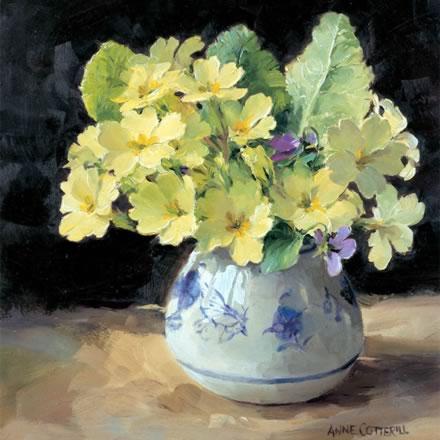During the 16th century, people returned to their ‘mother church’ for a service to be held on the fourth Sunday in the season of lent. Their 'mother church' was either the church where they were baptised or the local parish church or the nearest cathedral. Anyone who did this was commonly said to have gone "a-mothering". In later times, Mothering Sunday became a day when domestic servants were given a day off to visit their mother church, usually with their own mothers and other family members. It was often the only time that whole families could get together, since on other days they were prevented by conflicting working hours.
The children would pick wild flowers on the way home to place in the church or give to their mothers. Eventually, the religious tradition evolved into the Mothering Sunday secular tradition of giving gifts to Mothers.Others would bring home a cake from the manor house where they worked. The most common cakes that were thought to have been made were fruit cakes known as simnel cakes, which are to this day the traditional Mothering Sunday cake that is made.
In some churches, the happy reunion was integrated into the Mother-themed church service where the spring flowers that were picked by the children would be blessed by the church before being presented to the mothers. To this day, flower bouquets are amongst the most common gifts given to mothers on Mothering Sunday.
Somewhere along the line between the 16th century and the early 20th century, Mothering Sunday celebrations began to fade and celebrations became more subdued. But around the 1940s two main things occurred which led to the revival of Mothering Sunday. The first thing that happened was that in the United States, a lady called Anna Jarvis campaigned for an American celebration of mothers throughout the country. Her success resulted in the first national American celebration of Mother’s Day in 1908. Some of her enthusiasm made its way to Britain to a woman called Constance Penswick-Smith who, campaigned for the closest British equivalent Mother’s day celebration, Mothering Sunday, to be revived. Constance’s Mothering Sunday Movement campaign lasted a good few years, all the way from 1914 to the early 1920s. Although nothing much changed in Britain until the Second World War.
During World War II, English, American and Canadian soldiers worked alongside one another and had a chance to socialise and talk. One thing that they all had in common was missing their mothers back home. With this newly realised appreciation for their mothers and inspired by the American celebrations, the British soldiers brought back with them a new found eagerness and desire to celebrate their mothers. By the 1950s, Mothering Sunday was once again celebrated throughout Britain with great enthusiasm.
A merging occurred between new American traditions and old Mothering Sunday traditions as British mothers began being shown love and appreciation on Mothering Sunday. The merging of traditions was so strong that people even began calling Mothering Sunday, “Mother’s Day”.
Today many people believe that Mothering Sunday and Mother’s Day are one and the same thing, and although the two celebrations have distinctly different origins, they share the same principles at their core a celebration and appreciation of mothers, be they holy, human or otherwise.






